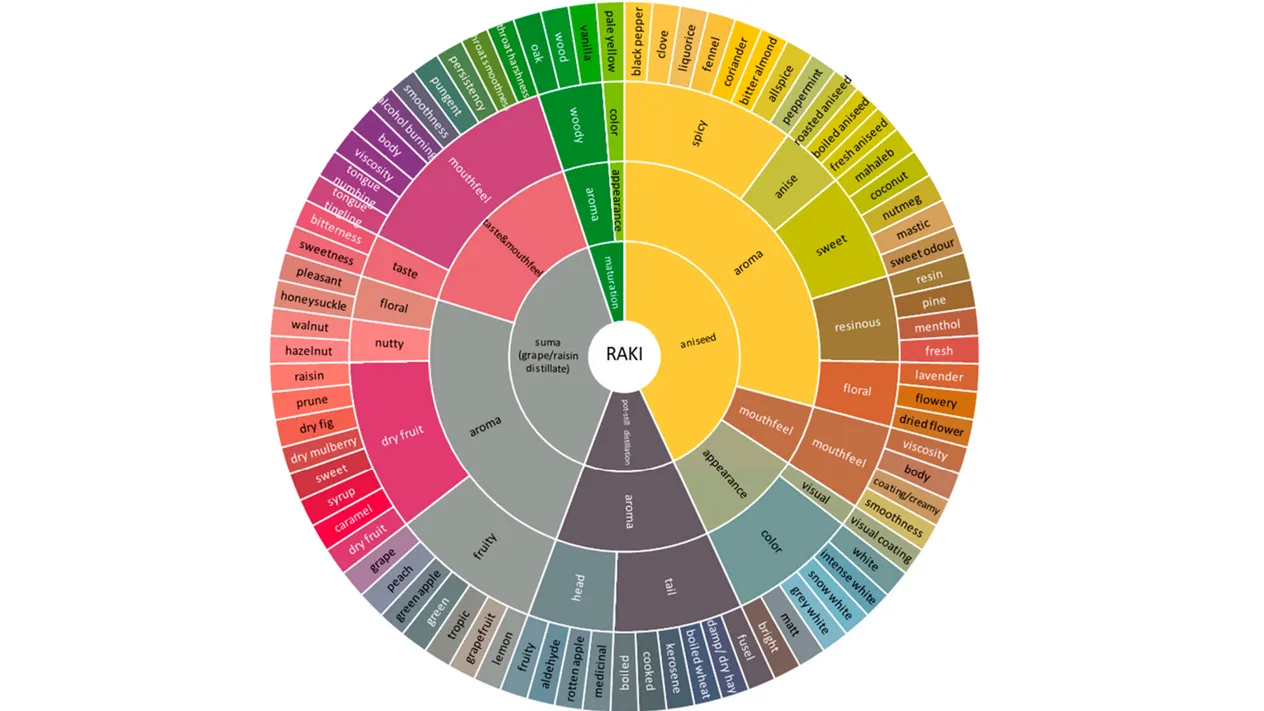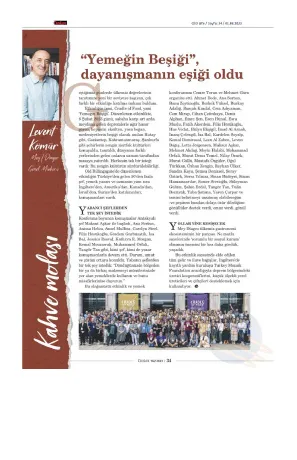- Home
- News About Us
- The First Aroma And Taste Wheel Has Been Identified
The First Aroma And Taste Wheel Has Been Identified
01 November 2023
The one-year scientific study to provide a better understanding of the aromatic depth and richness of raki and contribute to new product range has been completed.
THE FIRST AROMA AND TASTE WHEEL HAS BEEN IDENTIFIED FOR RAKI, WHICH HAS A 500-YEAR-OLD, RICH HISTORY
Thanks to the study, which was carried out under the collaboration of Mey|Diageo and the Faculty of Agriculture Food Engineering of Cukurova University and participated by 16 expert panelists, using the descriptive sensory analysis method, Raki Taste Wheel has been identified. Throughout the study, top brands of all producers in Turkish market were subjected to repeated sensory analysis, through more than 3000 tastings over a year.
In May 2020, this study was turned into an article by Prof. Dr. Turgut Cabaroglu and Dr. Merve Darici from Cukurova University, and Duygu Beypinar, the Senior Quality, Technical and Innovation Manager, and Koray Ozcan, the Quality, Technical and Innovation Manager, from Mey|Diageo, and it is pending publication in a peer-reviewed scientific journal.
Descriptive sensory methods are referred to as the most advanced method used in the sensory analysis of products for qualitative and quantitative determination of sensory descriptors by trained panelists. This method allows for qualitative evaluation of the characteristics of a product that distinguish it from others, such as aroma, appearance, taste, flavor, texture, mouthfeel, after-taste, and sound. Then, perceived product characteristics are subjected to quantitative evaluation by the panelists.
The most important advantage of descriptive sensory analyses is that it allows for determination of a relationship between consumer preference or instrumental analysis results and sensory results. Descriptive sensory analyses can also be employed for quality control of products, understanding consumer reactions and matching products.
Taste wheel is studied for gastronomically rich products, such as whiskey and wine in the spirits industry, and coffee and chocolate in the food industry. The literature does not include any taste wheel studied for raki.
Duygu Beypinar, the Senior Quality, Technical and Innovation Manager at Mey Diageo, explained why they have studied aroma taste wheel, which is a frequent practise in France, Italy, Spain, Australia and the USA, as follows:
Such studies play a very important role in improving the quality and expanding the range of products with agricultural input, high added value and geographical indication, which are regulated by law, and the standards of which are set forth in legislation, such as raki. Ensuring widespread use of such analyses will have significant contributions to raki producers in identification of raki characteristics and improvement of raki quality. In addition, in the long-term, use of such analyses will help identification of descriptors specific to grape and anise varieties and region, and control of the origin.
The aromatic richness of raki makes it distinguish from other spirits with aniseed in the world. Only grapes and aniseed grown in Türkiye can be used in raki production. The intense aroma of raki comes from particularly making use of grapes in its production and distillation of suma to a maximum alcohol content up to 94.5%. In addition, the use of anise (Pimpinella anisum species), which is a plant from the parsley family grown in Türkiye, in its production gives raki a character with incredible aromatic richness and depth.
Based on our studies, we can say that there are more than 90 different aroma components from anise. Black pepper, nutmeg, liquorice, mastic and fruity aromas can be listed as an example of aromas from anise.”






